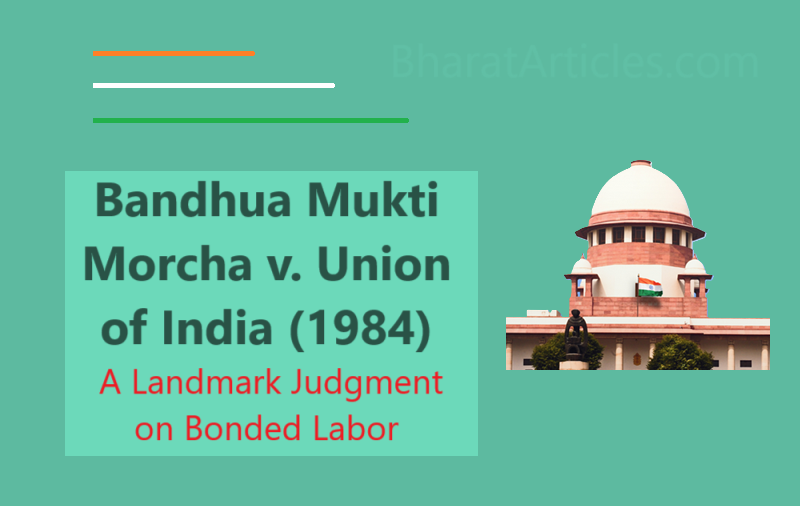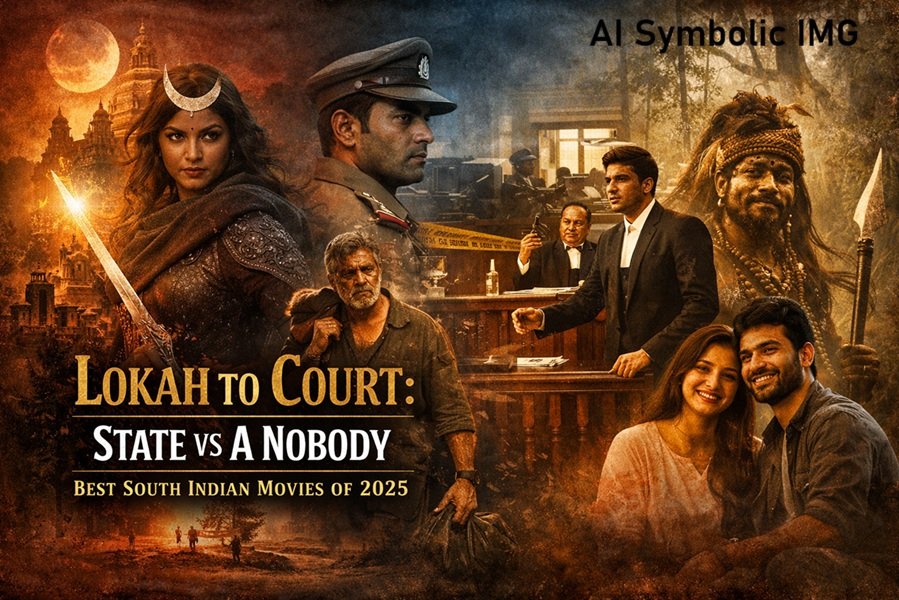
Introduction
The Bandhua Mukti Morcha v. Union of India (1984) case is a significant judgment in Indian constitutional law concerning the rights of bonded laborers. This case played a crucial role in reinforcing the constitutional commitment to ending forced labor and ensuring social justice for marginalized workers. The Supreme Court of India, in this case, expanded the scope of fundamental rights and emphasized the role of Public Interest Litigation (PIL) in safeguarding human rights.
Background of the Case
Bonded labor, a system in which individuals are forced to work to repay debts under exploitative conditions, has been a persistent social evil in India. The practice was formally abolished by the Bonded Labour System (Abolition) Act, 1976, yet it continued in various parts of the country, particularly affecting marginalized and economically weaker sections.
Bandhua Mukti Morcha, an NGO led by Swami Agnivesh, conducted an investigation in some stone quarries of Faridabad, Haryana, and found that workers were subjected to inhumane working conditions, deprived of basic rights, and effectively bonded. The NGO filed a Public Interest Litigation (PIL) under Article 32 of the Constitution, seeking enforcement of fundamental rights for these laborers.
Issues Raised
The primary issues before the Supreme Court were:
- Whether the bonded laborers in Faridabad’s stone quarries were being subjected to forced labor in violation of fundamental rights.
- Whether the State had failed in its duty to implement the Bonded Labour System (Abolition) Act, 1976, and other labor laws.
- Whether the PIL was maintainable under Article 32, which is usually invoked for violations of fundamental rights by the State.
- What remedial measures should be taken to ensure the rehabilitation and welfare of freed bonded laborers?
Arguments Presented
Petitioner’s Arguments (Bandhua Mukti Morcha):
- The workers were subjected to forced labor, violating their fundamental rights under Article 21 (Right to Life and Personal Liberty) and Article 23 (Prohibition of Forced Labor).
- The State had a duty to identify, release, and rehabilitate bonded laborers as per the Bonded Labour System (Abolition) Act, 1976.
- The State had failed to enforce labor laws such as the Minimum Wages Act, Factories Act, and Mines Act, leading to continued exploitation.
Respondent’s Arguments (Government of India & State of Haryana):
- The State contended that it had been taking measures to address bonded labor issues and had implemented welfare schemes.
- The State argued that the PIL lacked concrete evidence to establish the existence of bonded labor in the stone quarries.
- The government maintained that the affected individuals could seek remedy through regular legal channels rather than invoking Article 32.
Judgment and Rationale
The Supreme Court, led by Justice P.N. Bhagwati, delivered a landmark ruling expanding the scope of fundamental rights and the role of PILs. The key aspects of the judgment were:
- Recognition of Bonded Labor as a Violation of Fundamental Rights:
- The Court held that forced labor is prohibited under Article 23 of the Constitution, and any form of labor under coercion—whether through economic compulsion or physical restraint—amounts to bonded labor.
- Article 21 was interpreted broadly to include the right to live with dignity, meaning exploitative labor conditions violate this right.
- Expanded Scope of Public Interest Litigation (PIL):
- The Court ruled that any public-spirited individual or NGO could approach the court on behalf of marginalized sections whose fundamental rights are violated.
- The rigid rules of locus standi (the right to bring a case) were relaxed, ensuring greater access to justice for weaker sections of society.
- State’s Duty to Abolish Bonded Labor:
- The Court held that the government was constitutionally bound to identify, release, and rehabilitate bonded laborers.
- Authorities were directed to enforce the Bonded Labour System (Abolition) Act, 1976, and other labor laws more effectively.
- Emphasis on Rehabilitation and Welfare Measures:
- The State was ordered to take concrete steps for the rehabilitation of freed laborers, including providing employment opportunities, education, and social welfare measures.
- The Court mandated periodic compliance reports to ensure the State’s accountability in eradicating bonded labor.
Significance of the Judgment
- Strengthened Constitutional Protections:
- This case reinforced that the right to life under Article 21 includes the right to dignity and humane working conditions.
- It affirmed Article 23’s prohibition on forced labor and made clear that economic compulsion can amount to coercion.
- Judicial Activism and PIL Expansion:
- The judgment played a key role in expanding PIL jurisdiction, allowing civil society organizations to approach the court on behalf of marginalized groups.
- It set a precedent for future cases on human rights, labor rights, and environmental justice.
- Impact on Government Policies:
- The case led to greater enforcement of labor laws and increased government focus on bonded labor eradication programs.
- It strengthened the framework for identification, release, and rehabilitation of bonded laborers across India.
- Continued Influence on Labor Rights:
- The ruling served as a foundation for later labor rights cases, ensuring stronger judicial oversight in preventing labor exploitation.
- It has been cited in various judgments relating to child labor, human trafficking, and fair wages.
Conclusion
The Bandhua Mukti Morcha v. Union of India (1984) case remains a landmark decision in India’s legal history. It expanded fundamental rights, promoted judicial activism through PILs, and reinforced the government’s duty to eradicate bonded labor. By recognizing forced labor as a violation of dignity and human rights, the judgment set the stage for stronger legal protections for laborers in India. The case continues to be a reference point in discussions on labor law, social justice, and human rights enforcement.
Recommended: Kesavananda Bharati v. State of Kerala (1973)






